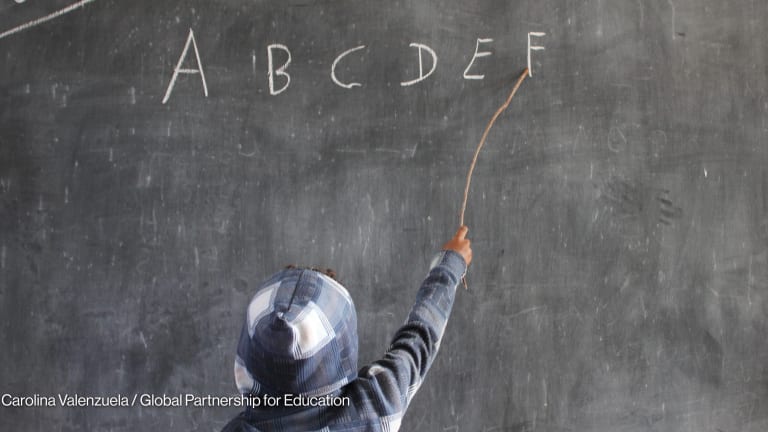
The total finance gap for basic education now stands at $26 billion per year. With just 1,000 days to go until the 2015 deadline for Millennium Development Goals, the global community needs to make a final push to overcome one of the biggest obstacles to education in the world’s poorest countries: finance.
What is the likelihood of filling this gap by 2015?
Our analysis shows that by targeting government and donor resources at education, and basic education in particular, the resources can be found.
One crucial step is for governments in low income countries to spend the recommended 20 percent of their budgets, and donors to spend 20 percent of their aid, on education, with 50 percent directed towards basic education. This alone would raise $11.5 billion.
Our calculations show the main bulk of the current gap is due to donors not living up to their aid promises.
If the European donors who committed to allocating 0.7 percent of their gross national income to aid met their promises and allocated a share to education, this would reduce the financing gap by $1.3 billion.
Other reforms do not even require additional resources, but a reallocation within education: currently, one quarter of total direct aid to education never even leaves donor countries.
This money is spent on scholarships and imputed student costs for students in developing countries to study in donor countries.
In 2010, almost 40 percent of Japan’s direct aid to education went to scholarships for students studying in Japan; the equivalent for Canada was 22 percent. Germany’s aid disbursements to scholarships and imputed student costs were almost eleven times the amount it spent on direct aid to general secondary education and vocational training in 2010. That same year, France’s aid disbursements to scholarships and imputed student costs were four times as much as was spent on direct aid to general secondary education and vocational training.
This money could be more effectively spent helping the world’s poorest children.
With recent worrying news from the OECD that bilateral aid to less developed countries declined by 12.8 percent in 2012, it is vital to put in place mechanisms to ensure that the world’s poorest countries are not held back from achieving goals after 2015 due to lack of finances.
The new Education for All Global Monitoring Report therefore recommends a new finance goal to hold governments and donors to account. Recent discussions on education goals post-2015 frequently include the ambition to extend to universal lower secondary education by 2030.
Such a move, we have calculated, would increase the annual education finance gap to $38 billion and so requires a clear commitment of resources to help countries meet these ambitions.
Increasing governments’ tax bases and finding more philanthropic donors to support education as they support health could help fill this larger financing gap. Other sources of education financing include the group of emerging economies known as the BRICS (Brazil, Russia, India, China and South Africa), and the proposed International Financial Transaction Tax.
The BRICS, for example, currently raise $163 million per year for basic education. If China alone were to allocate less than 1 percent of its gross national income to aid, with a minimum share going to education, this alone would fill the remaining financing gap.
The lack of specific targets for the eighth Millennium Development Goal on a global partnership has let governments and donors off the hook this time around. For the sake of the education of the world’s children, we cannot afford to make the same mistake after 2015.
We suggest a new education finance goal — By 2030, ensure that no country is prevented from achieving education goals by a lack of resources:
by maximizing government revenue and ensuring that government spending covers education needs, targeting the marginalized when necessary;
by maximizing aid, and targeting it at countries and groups who need it most;
by maximizing resources from the private sector, and targeting it at countries and groups who need it most.
The global community must remember its promise that no country will be left behind in education due to lack of resources, and renew it with vigor by 2015.
Join the Devex community and access more in-depth analysis, breaking news and business advice – and a host of other services – on international development, humanitarian aid and global health.








